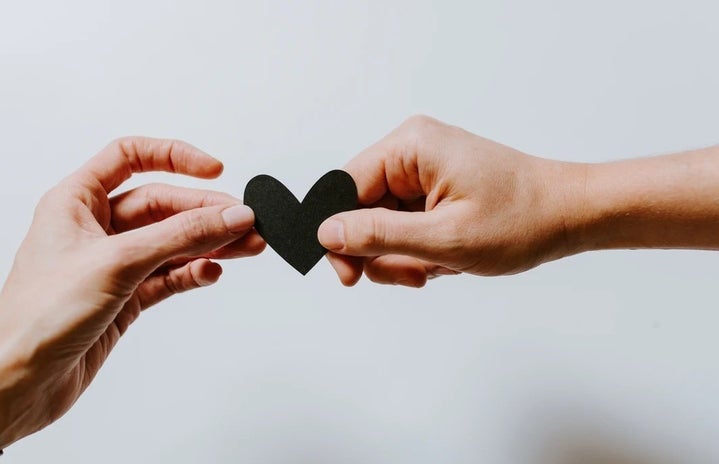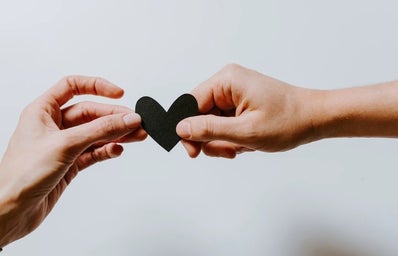It’s that time of the year again when it seems like everyone is holding hands and getting into relationships just in time for the cozy, holiday season. That’s right, cuffing season has arrived. For those in relationships, it’s exciting to have someone to cuddle with around Halloween and someone to kiss under the mistletoe. For those not in relationships, this time of year may be a rough one. With cold weather, loneliness, and social pressures constantly in the mix, cuffing season can be one of the most wonderful times of the year or one of the worst. But it depends on what you make of it.
What is Cuffing Season?
Cuffing season is considered to be during the colder fall and winter months when people most desire a relationship. This “season” typically lasts from October to the end of February, right after Valentine’s Day. Although the Gen-Z term began as an internet joke, it has grown in popularity over time and has acquired various definitions. The original Urban Dictionary definitions, from 2010 and 2011, describe it as the time of year when people are talking, going out more, and desire to be “cuffed” by a serious relationship. The term “cuffed” alludes to the word “handcuffs,” but symbolizes being tied down and committed to one other person. Merriam-Webster defines cuffing season as when “single people begin looking for short-term partnerships to pass the colder months of the year.” While opinions differ on whether the season revolves around a desire for serious relationships or a desire for short-time accompaniment during the holidays, cuffing season has become a human phenomenon that has consumed pop culture over the years.
Why Does It Exist?
Some may assume that cuffing season is simply a made-up term with no evidence to back it up. The exact term may be relatively new, but research has shown that there may be evolutionary or scientific roots to explain this relationship phenomenon. From an evolutionary standpoint, humans would not be able to survive the cooler fall and winter seasons without physical contact to provide them warmth. Biologically, researchers have discovered that men’s testosterone levels and women’s estrogen levels rise, and their serotonin levels fall during winter. This can be a factor in the desire for companionship and intimacy during the colder seasons. Seasonal Affective Disorder, more commonly known as “Seasonal Depression,” may also contribute to the need for love and affection due to immense loneliness. Studies show that the brain chemicals that control your mood change significantly during the winter seasons. Although cuffing season may be a newly coined term, the concept of people desiring comfort and intimacy during fall and winter has existed for ages.
Some researchers studied this term through data analysis to find its application in today’s modern, technological society. Facebook experts analyzed trends over time and concluded that people were most likely to change their relationship statuses to “In a Relationship” during cuffing season. Other studies reveal that online dating spikes during the fall and winter seasons, in comparison to summer. In addition, Polish researchers discovered that in heterosexual relationships, men are more attracted to women in the winter than in spring and summer. This may be a surprise, but due to the “contrast effect,” men’s unconscious perception of female attractiveness changes seasonally. While the colder months tend to be lonelier, people often resort to dating and getting into relationships for a sense of comfort and attraction. Although cuffing season may not be an official, widely-accepted term yet, the concept is rooted in our human nature and innate desire for love during the colder seasons.
Implications: Social Pressure
Cuffing season may be an ideal time of year for those in happy, serious relationships, however, there are also intense social implications for those who cannot experience the same. Walking around and noticing more PDA and new relationships may make people feel immensely lonely, especially during an already lonely time of the year. This fear of missing out can pressure people to engage in dating and mingling to form a relationship for the holidays. Social media greatly enhances this social pressure because, as people post the best versions of themselves, and thus the best versions of their romantic relationships, single folks may feel more emotional and sad when comparing themselves to others.
How to Get Through It
I have been through cuffing season while in a long-term relationship, single, and in the middle of a breakup. If you’re in a relationship during this season, enjoy it with your significant other. It is a sweet and cozy time of the year to spend with a loved one, but make sure to be there for your single friends too.
For those who are single and feel the pressure to be developing relationships, I know this time of year can be difficult and lonely. Although this may be easier said than done, don’t let seeing others in relationships or that feeling of FOMO get to you. Fall and winter are the perfect seasons to focus on yourself. Acknowledge that the relationships we see online are curated and that we’ll never know what happens behind closed doors. There is no reason to compare your relationship status to everyone else. Wouldn’t you rather spend it with yourself, the one person who knows best how to make you happy, than with someone who isn’t worth it? Focus on activities you truly enjoy, take yourself out on dates, value the precious time you have with your friends and family, and be incredibly present through it all. The more you focus on yourself and express gratitude, the more you will build confidence and grow as a person.
For those recovering from a break-up during cuffing season, understand that your feelings are valid. Whether you’re getting out of a long-term relationship, or a situationship, the feeling of heartbreak is painful. Let out a good cry, surround yourself with people you love, and plan activities you love too. You’ll end up learning a lot about yourself. Getting through heartbreak is difficult, but it’ll leave you much stronger and much more prepared for your next, and better, relationships to come.
Cuffing season only lasts for a short period of time, and whether it’s spent with a significant other or some friends and family, there are plenty of ways to have a good time. Although it may look like everyone is in love and in happy relationships, you truly never know the whole story, so you cannot compare yourself reasonably. Take the holiday season as a time to relax, and enjoy this special time of the year with whoever will make you feel your best. Cuffing season may be a time for lovers, but it can be a time to love yourself too.



